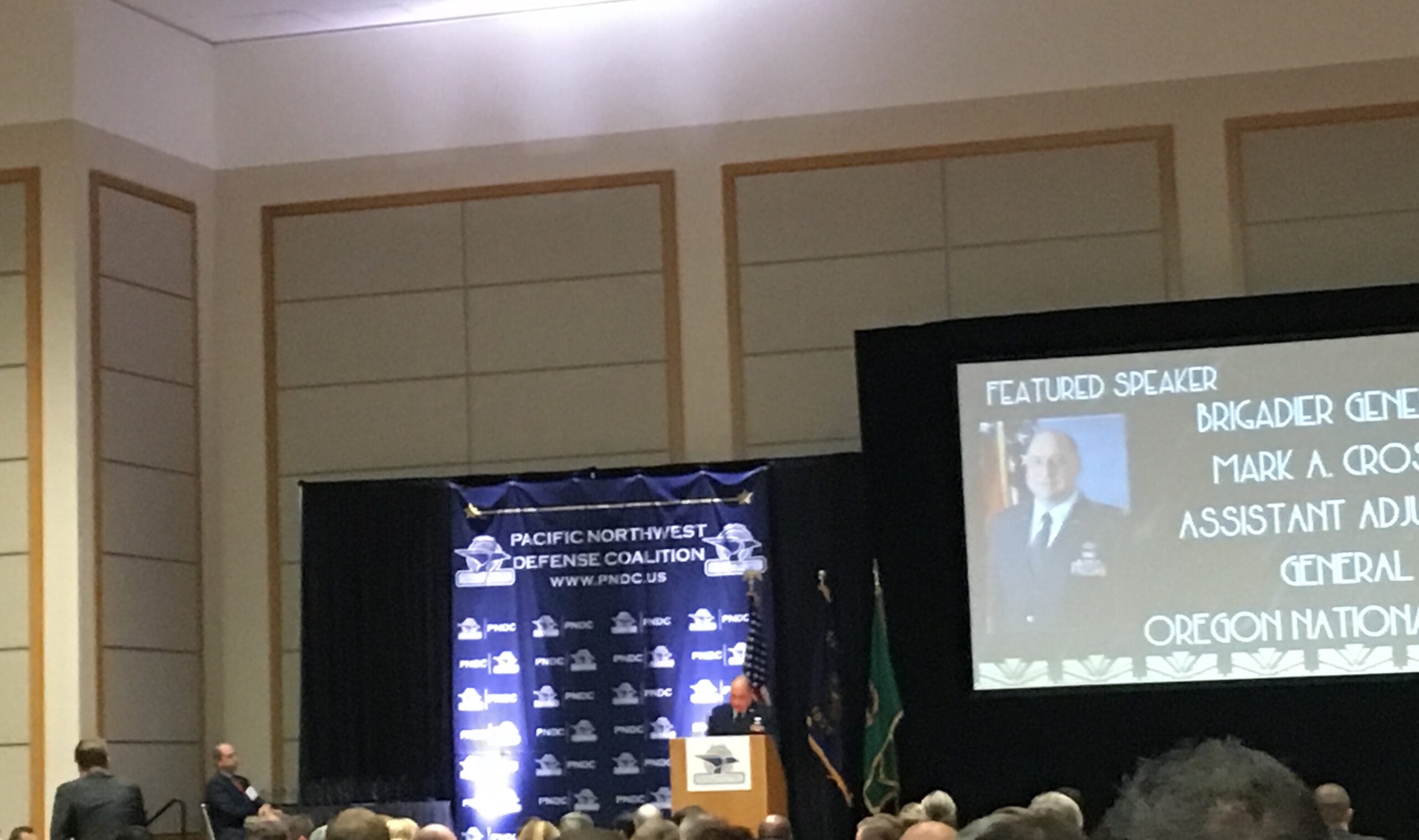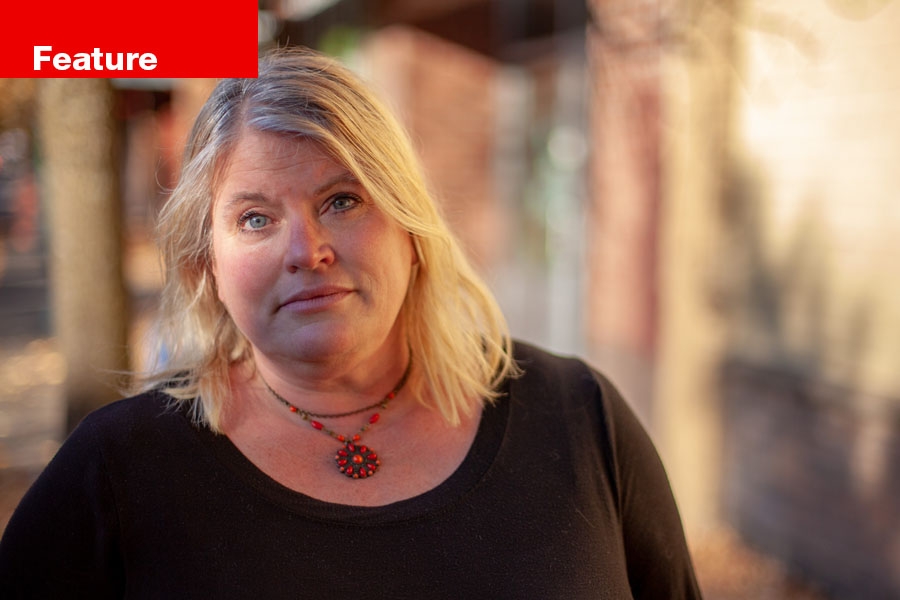In spite of escalating labor shortages, the portion of women in Oregon’s manufacturing industry hasn’t budged in more than two decades. Five experts share their perspectives on how to close the gender gap.
In the mid-’90s, women made up only about a fourth of the manufacturing workforce in Oregon. Two decades later, that number remains unchanged. And the picture looks just as dim at the national level, where women are still underrepresented in nearly every corner of the business, from the factory floor up to the top boxes of organizational charts.
Meanwhile, hiring is on the rise, but employers in every manufacturing sector struggle to meet their labor demands. Scores of jobs go unfilled as companies across the state cite recruiting and retaining talent among their top operational challenges.
Closing the skills gap requires closing the gender gap — it’s a fact the industry has come to recognize too slowly, according to some of the leading women in the field, whom Oregon Business surveyed for this report on one of the fastest-growing areas of the economy.
Here we profile five insiders who scrutinize the state of gender equity in this broad and technologically evolving category, which encompasses products as eclectic as building ships and crafting jewelry. Together they show how improving gender representation requires a concerted approach from across the industry to reshape an institutionalized culture of gender-based segregation and redefine archaic norms of what work women can and cannot do.
(Photos by Jason Kaplan)
The business case for inclusive recruitment
Kelly Kupcak, executive director of Oregon Tradeswomen

“If they say, ‘We’re only going to hire white men,’ they’re leaving out more than half of the eligible workforce.” Kelly Kupcak
“Diversity, equity and inclusion — it’s not just about social justice,” says Kelly Kupcak, the executive director at Oregon Tradeswomen, one of only a handful of such organizations in the country.
For nearly three decades, the mission of this Northeast Portland-based nonprofit has centered on bridging the gender gap by helping women score jobs in historically male-dominated trades. That much hasn’t changed.
Yet in a sector now defined by persistent labor shortages, Kupcak isn’t only speaking about how these careers can put women and their families on the path to economic self-sufficiency. Today she more often makes the case that a segregated workforce is simply bad for business — a candid message that increasingly resonates with upper management.
“When you talk to employers, they’re really looking at their bottom line, and they have a demand for skilled labor,” she explains. “If they say, ‘We’re only going to hire white men,’ they’re leaving out more than half of the eligible workforce.”
Until recently, Oregon Tradeswomen has focused on pre-apprenticeship programs in construction, working with around 120 women a year and successfully placing about 87% of their students into the field. But in the past year, the organization has put greater emphasis on the world of manufacturing, taking its expertise in the building trades and applying it to this broad, ever-changing industry where well-paying jobs abound.
Their first steps into this space led to the Women in Metals & Manufacturing training program, funded in part by a $200,000 grant from Bank of America. This extension of Oregon Tradeswomen’s core class runs up to three weeks and introduces women to the fundamentals of industrial fabrication — offering up to 80 hours of hands-on experience in welding while also teaching essential skills such as machining, shop math and blueprint reading.
With insights gleaned from more than a year of testing this model, Oregon Tradeswomen plans to spin off the manufacturing extension into a dedicated pre-apprenticeship pathway in 2019, giving incoming students an opportunity for more robust and specialized training. They’ll continue to modify the program with feedback from stakeholders, Kupcak says.
“We are working on the national level with the U.S. Department of Labor, employer associations, registered apprenticeship program partners and unions to say, here’s how we fill a labor demand — and at the same time, here’s how we ensure diversity and inclusion.”
Building supportive networks for women
Renee Eaton, president of Women in Manufacturing’s Oregon chapter

“I remember when I decided I was going to look for manufacturing jobs, I applied to a local brewery and actually got a letter back saying that they didn’t have any openings for a woman with my qualifications,” says Renee Eaton. “I thought, OK, this isn’t a good start.”
Unlike many young women who may not be exposed to manufacturing as a career path, Eaton virtually grew up in a factory. The third generation in a family of manufacturers, Eaton spent many of her formative years in her parents’ box manufacturing plant, hanging around the machinery and working on some of the equipment. So that first rejection didn’t deter her. She persisted and eventually landed a job in Nabisco’s management training program.
“I went through a gauntlet of experiences as one of the few women on the floor,” she says. “It hasn’t always been easy.”
As she’s climbed the career ladder over the past few decades, Eaton says many things have gotten better for her. She’s now the CEO and co-founder of RapidMade, a Tigard-based firm specializing in 3D printing, design and prototyping. But in the present context of the #MeToo movement, which has rattled many industries with allegations of rampant gender-based discrimination and sexual misconduct, Eaton sees many indicators that the manufacturing industry, too, has a long way to go.
“It’s been very demoralizing for me, 30 years on, to see that we’re still having many of the same conversations that we were having back then,” she admits.
That’s one big reason Eaton launched the brand-new Oregon chapter of Women in Manufacturing this past March. The only national association dedicated to supporting women in the trade, Women in Manufacturing serves as a professional network while also creating mentorship opportunities to encourage high school- and college-age women to consider manufacturing as a career path. A recent meeting, for example, paired a troupe of curious students with professionals advanced in their careers. It’s one small way Eaton hopes to improve networking opportunities regionally and diversify the state’s talent pool.
It’s also a nudge to peers in her industry to engage more with organizations such as Women in Manufacturing. Eaton hopes her work with the association can inspire more dialogue about gender representation at the local level.
“We know that many jobs don’t often get posted. Your ability to have access to a greater network increases your opportunities,” Eaton says. “That’s why associations like this are so critical.”
Incubating a more accessible culture
Kelley Roy, founder of the ADX makerspace

“Manufacturing has a branding problem. It’s many of the same challenges that the tech world faces — that ‘bro culture,’ like being in a frat house.” Kelley Roy
“Manufacturing has a branding problem,” says Kelley Roy, perhaps the most vocal advocate for small-scale artisan businesses in Oregon. “It’s many of the same challenges that the tech world faces — that ‘bro culture,’ like being in a frat house.”
The industry should look to the fast-expanding community of do-it-yourself micro-manufacturers for some answers, says Roy, who founded ADX, a collaborative “makerspace” that offers shared tools, floorspace and resources.
That’s a big reason that Roy and several other leaders in the state’s maker scene declined an invitation to join President Barack Obama for an industry forum at Nike’s HQ when he visited the state in 2015.
“If you want to celebrate local manufacturing, go somewhere that’s really investing in local manufacturing in Portland and Oregon,” she says.
Since opening its doors in 2011, ADX has served as a launchpad for more than 100 businesses and provided space for thousands more “solopreneurs” — designers, builders, artists and side-hustling hobbyists. Added together, the local maker economy amounts to thousands of jobs. That may seem an insignificant sum in contrast to large-scale industrial producers, but it’s a distinct model that she believes offers lessons in creating a more inclusive business culture.
“We have such a wide variety of people who work out of ADX — a lot of women working in the shop and people of color,” she says. “It feels more connected, more like a community.”
And the gender distribution of Portland’s artisan community does show about an equal breakdown between men and women, according to a 2014 survey of area makers conducted by Portland State University.
Makerspaces like ADX have an opportunity to incubate a more diverse and entrepreneurial manufacturing culture, albeit on a small scale. For one, they can help the trades seem more accessible to underrepresented groups. Roy describes them as spaces for learning that don’t come with the institutionalized baggage or rigidness of formal apprenticeship programs — appealing to people who may not naturally consider traditional educational pathways to manufacturing work.
“It really is the first point of entry for someone to explore this idea of making things and see if it’s something they want to do for a living,” says Roy, who is currently in conversation with people in cities such as Grants Pass and Central Point who are interested in replicating her model.
“I believe it’s an essential aspect of a local economy. Every community in Oregon should have a makerspace.”
The hard costs of hostile workplaces
Roberta Hunte, assistant professor at Portland State University
“The reality in the trades is that people are aging out and young people aren’t coming in.” Roberta Hunte

What does it matter if more women are landing jobs in the industry if they are quickly driven out by hostile workplaces?
Hunte found herself pondering this question while working as a career counselor for Oregon Tradeswomen. She would often see students successfully complete the pre-apprenticeship program and secure a position in the field only to then struggle day-to-day with toxic workplaces. Eventually, many of those women would opt to leave the trades altogether rather than endure misogyny, sexism and racism.
Watching that cycle repeat itself prompted Hunte to research the lived experiences of African-American women in the building trades, a historically marginalized demographic that represents only around 1% of Oregon’s construction workforce. Her 2012 doctoral dissertation analyzed the careers of black tradeswomen. That research was spun off into a play, adapted for the stage by Bonnie Ratner, executive director of The August Wilson Red Door Project. Hunte has also co-produced a film, Sista in the Brotherhood, which employers increasingly use as an equity training tool.
Many of the experiences women of color report on job sites in the building trades mirror the discrimination they face in the male-
dominated and racially homogeneous manufacturing sector.
“The black women I interviewed [for my dissertation] would say, ‘I don’t know why someone doesn’t like me — is it my race or my gender?’” Hunte explains. “If you’re trying to support women of color, then you have to address racism and sexism. Both of those ‘isms’ play into the challenging experience for women of color in the trades.”
No single solution can address such deeply ingrained and institutionalized problems. But companies do have the power to take a range of actionable steps such as implementing and enforcing equity policies, investing in promoting more women to leadership roles, and investing in mentorship and support services.
Hunte says employers have a vested business interest in making inclusive and equitable workplaces a top priority.
“Not addressing the problem in the industry has many costs,” she says. “Employers need to think more about how much we might save when people feel like they can stay in their jobs — how much knowledge, training and expertise you retain in the process.”
Community colleges as collaborative hubs
Carrie Weikel-Delaplane, director of apprenticeship and trades at Portland Community College’s Swan Island Trades Center

“We’re intentionally trying to create an environment that encourages female-identified and gender-nonconforming students to go into the trades,” says Carrie Weikel-Delaplane, the recently appointed director of apprenticeship and trades at Portland Community College (PCC).
With a resume spanning more than two decades in higher education, Weikel-Delaplane just stepped into her role at the 20,000-square-foot Swan Island Trades Center in October — coincidentally, National Manufacturing Month. Hers is a newly created position at the college, one of the largest institutions of its kind on the West Coast. It underscores PCC’s goal of placing more underrepresented students into trade-related career pathways.
“I’m drawn to this work because the trades are so often overlooked,” she says. “They’re not promoted to women or people of color in the ways that they could be. This is an area where we can have tremendous reach.”
Enrolling nearly half of all U.S. undergraduate students, community colleges play an often underappreciated role in workforce training and retraining. Generally, their open admissions policies, flexible schedules and lower costs of tuition make their programs accessible to a wider swathe of the population than four-year universities. This, in turn, means many two-year schools report markedly low completion rates. But it also makes community colleges — which reach large numbers of underserved students, disproportionately people of color — uniquely positioned to meet the growing labor demands in the fast-evolving trades.
“The key word here is ‘partnering,’” says Weikel-Delaplane. She emphasizes that effectively tackling problems as large as gender discrimination and workforce shortages in entire industries requires teaming up with employers, industry associations, nonprofits and policymakers to reimagine apprenticeship models and training methodology. She points to the recent work the college has done on the Construction Career Pathways Project, in conjunction with Metro and more than a dozen other regional stakeholders, to advance racial and gender equity in the building trades.
PCC has taken a similarly collaborative approach with some of its manufacturing programs. For example, the college has worked strategically with the International Brotherhood of Electrical Workers labor union and community-based advocacy organizations to address gender representation in its electrical program. And in the past five years, Swan Island has doubled the percentage of female-identified electricians enrolled in the track, up from 4.9% in the 2013-14 academic year to 10.3% in 2017-18.
“Our work in the trades is just exploding. It needs dedicated support,” she says. “And I’m not just saying that for job security.”
To subscribe to Oregon Business click here.








